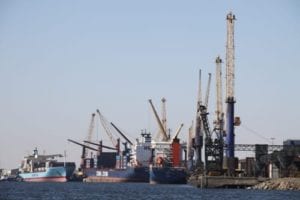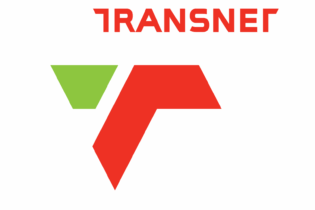Is the Port of Walvis Bay a viable alternative for South African manufacturers? After the initial AIDC study ten years ago, we revisit this strategic decision – and conclude that it is.
Ten years ago the Automotive Industry Development Center (AIDC) commissioned a study to ascertain whether it was financially viable for the automotive industry to utilise the Port of Walvis Bay as a shipment port.In benchmarking the Port of Walvis Bay against Durban and Port Elizabeth, the variables for the study were focused on transit times and cost. The study involved 40foot containers which were transhipped via Rotterdam to the Port of Antwerp, Belgium. From there the containers were forwarded into Europe. Two containers were road hauled from Gauteng to Walvis Bay. The third container went to Durban by road while the fourth container was sent via rail to Port Elizabeth. All departed simultaneously destined finally for Antwerp. At the time, after the study had been completed, the AIDC/WBCG team established that the simultaneous trial shipment of 40 foot containers through Walvis Bay, Durban and Port Elizabeth proved that Walvis Bay was a viable alternative to South African ports, especially for time sensitive cargo. That was then, when very little had been done to upgrade the Port of Walvis Bay. Since then much has been done. The Chief Executive Officer of the Walvis Bay Corridor Group, Johny Smith, in reflecting on the past ten years said, “It has become evident how the Walvis Bay Corridor Group has facilitated trade along the Walvis Bay Corridors and what a creative and constructive role these corridors have played in the national endeavour of building a dynamic sector in the Namibian economy and beyond.” He further added “that the Trans Kalahari Corridor (TKC) had developed tremendously, not only in terms of the volumes it carries, but also with regards to service excellence, especially in reducing transit times, removing bottlenecks and improving corridor logistics. And, as with opinion, independent opinion is always better. Daniel Brundige, Elizabeth Dawson, Mackenzie Massey and Sasha Moore’s (“the team’s”) May 2011 report “An Economic Development Strategy for the TransKalahari Corridor”strongly recommends a strategy for the economic development of the TransKalahari Corridor.This corridor extends from Walvis Bay to the border of Botswana through the towns of Swakopmund, Usakos, Karibib, Okahandja, Windhoek and Gobabis, and on to Gabarone, Botswana’s capital city to South Africa’s Johannesburg, the industrial capital of Africa. The diverse environments that the TKC traverses contain many different economic opportunities. The Walvis Bay Corridor Group has created an economic development plan with the goal of transforming the TKC from a transport route into an economic development corridor by taking advantage of these opportunities.
Through site evaluations of the corridor and interviews with the stakeholders including government officials, private sector representatives, and town councils they gained an understanding of the current projects, the projects under development, and those that need to be developed. This data was compiled into a comprehensive list of mining, tourism, manufacturing and other economic developments along the TKC. Additionally, they determined the socio-economic problems that each stakeholder believed were inhibiting the economic development of the TKC. Finally, the report amassed a list of recommendations for the WBCG to consider in solving these problems. It was the team’shope that the TKC strategy would help the WBCG attract investors to establish economic projects along the TKC. It would be these projects that would transform the TransKalahari Corridor from a transportation route to an economic development corridor. Once the transformation of this corridor is complete, the TKC will contribute to local and regional economic growth, increasing employment opportunities, reducing poverty, and decreasing the inequalities in income distribution as envisaged in Namibia’s Vision 2030. There is no doubt that the Trans Kalahari Corridor and the use of the Port of Walvis Bay is and will remain a financially viable alternative to South African ports, especially Durban where time delays are problematic. And, integrating marine, road and rail transport in a cost effective combination, even slotting in air transport where and when necessary, makes the TKC a practical solution in an increasingly competitive world where supply chain logistics costs need to be minimised.







